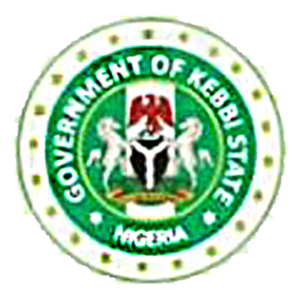
His Excellency, Comrade Dr. Nasir Idris
State Governor
About Kebbi
Kebbi State is among the 36 states of Nigeria and covers an area of 36,800 km2 it is located within latitudes 100 -130 N and longitudes 30 – 60 E. The state was created on the 27th of August 1991from the then Sokoto state with its capital city Birnin Kebbi. The State is the tenth largest in land area and the 22th most populous State with an estimated population of 4.4 million people as at 2016 (NPC, 2016) Among the major ethnic groups found in the State include Hausa, Fulani, Dakarkari Arawa and Zabarmawa. Others include Gungawa, Dandawa and Kambari. In the study area, desertification and perennial flooding are the main environmental issues and the region has long dry seasons, recurrent floods, skeletal and sparse vegetation cover. Kebbi state is located in the western part of Nigeria within the Sudan savanna region. Kebbi state shares boundaries from the east with Zamfara and Sokoto states, and to the south with Niger state while to the west it shares two international boundaries with Niger and Benin Republics. Economically Kebbi state is largely based around fishing and agriculture mainly of rice, sorghum, millet, maize, groundnut, onion and other crops. The State is also into rearing of cattle, livestock, goats and sheep. The state has four emirate councils (Gwandu, Argungu, Yauri and Zuru). Kebbi state has 21 local government areas (LGAs), distributed within three geographic regions (Kebbi Central, Kebbi South and Kebbi North). The LGAs are Argungu, Augie, Arewa, Aleiro, Bagudo, Birnin Kebbi, Gwandu, Maiyama, Bunza, Dandi, Danko/Wasagu, Fakai,Koko/Besse, Jega, Kalgo, Ngaski, Yauri, Zuru, Shanga and Sakaba.the state is known as the Land of Equity.
Specific Enviromental Challenges of Kebbi State
Desertification and perennial flooding are currently the major environmental problems affecting the Northern Nigeria. The region is characterized by high poverty rates, low literacy, an environment of fragility, conflict, and violence, degradation of natural resources, poor agricultural productivity, climate risks, desertification, poor penetration of modern technology, and weak institutional capacity. Addressing these issues will require effort in multiple sectors. Kebbi State has thus been with occurrence of floods. Floods occur rampantly as a result of torrential rainfall experience around August and September forcing major rivers to overstretch their banks coupled with the outflow of water from Bakalori and Goronyo Dams in the neighboring Zamfara and Sokoto The harsh and arid climate, exacerbated by persistent flooding and desertification conditions, exerts a serious stress on the scanty, fragile and delicate vegetation cover of the state. Rampaging mobile sand dunes have caused desertification and cause a lot of damage to farming communities, the rich oases in the state and other land users whose livelihoods depend on the land and biodiversity resources. In addition to desertification-induced ecological degradation about — of the State, large hectares of the arable lands in Kebbi State, human settlements and infrastructural facilities as such roads have also been lost to gully erosion.


